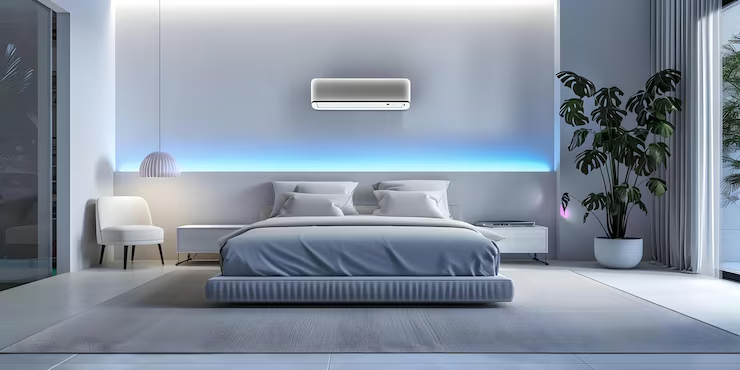The Impact of Air Conditioning on Relative Humidity

Inside buildings, especially those intended for commercial use, to achieve recommended levels of indoor air quality (IAQ), it is necessary to dilute the indoor air with air coming from outside, conditioned and filtered, as it contains pollutants and bioeffluents.
Let's take a hospital in winter as an example. For simplicity, we only consider the use of fresh air from outside—air that is very cold and humid (point A, temperature = -5°C, relative humidity = 80%). This air is then heated by a battery in one of the hospital's air handling units, undergoing a transformation in which its temperature increases, but the specific humidity (absolute water vapor content in a given quantity of air) remains constant. The new temperature and humidity conditions of the airflow are now represented by point B, i.e., temperature = 22°C and relative humidity = 12%.
As a result of the warming air, relative humidity—which expresses the amount of water vapor present relative to the maximum the air can hold at a given temperature before condensation occurs—drops dramatically. Relative humidity, in fact, drops from the initial 80% outside air to about 12% indoors, without removing any water vapor!
This happens because, when heated, the air increases the amount of water vapor it can "support" in suspension (humidity).

Heating of fresh outside air can be represented on a Carrier psychrometric diagram.
Thus, the air flow will be introduced into the building under the conditions described by point B and, when mixing with the air already present in the rooms, will cause a gradual reduction in the internal relative humidity.
From this example, it becomes clear that the need for air exchange to ensure adequate IAQ is directly related to the need to control humidity within the same environment. Even with reduced air exchange rates, the indoor environment will tend to be dry. And if ventilation criteria are adopted based on IAQ requirements or, as explained in previous chapters, with the goal of minimizing the risk of spreading infections, the air will become even drier, thus posing a risk not only to occupant comfort but also to their health.
Given the importance of maintaining an adequate level of relative humidity, a humidification system is necessary to return the relative humidity to the correct range. The humidification process can be implemented using an adiabatic system (line 1), by spraying very fine water droplets into the air, or through an isothermal system (line 2), by boiling water to produce vapor, which is absorbed by the air.

The heating and humidification of fresh outdoor air can also be represented on a Carrier psychrometric diagram.
Regardless of the humidification technology used, the system will work primarily during the winter when the heating system reduces relative humidity and makes the air very dry.
In conclusion , heating cold, humid outdoor air to 22°C can dramatically reduce relative humidity from around 80% to just 12% without removing any moisture, leaving winter air uncomfortably dry.
To maintain comfort and health (reducing dryness of mucous membranes, irritation, and pathogen transmission), a proper humidification system is essential, along with ventilation. Whether adiabatic (atomization) or isothermal (steam injection), the right technology will restore relative humidity to the ideal range of 40–60%, creating healthier and more energy-efficient indoor environments.











